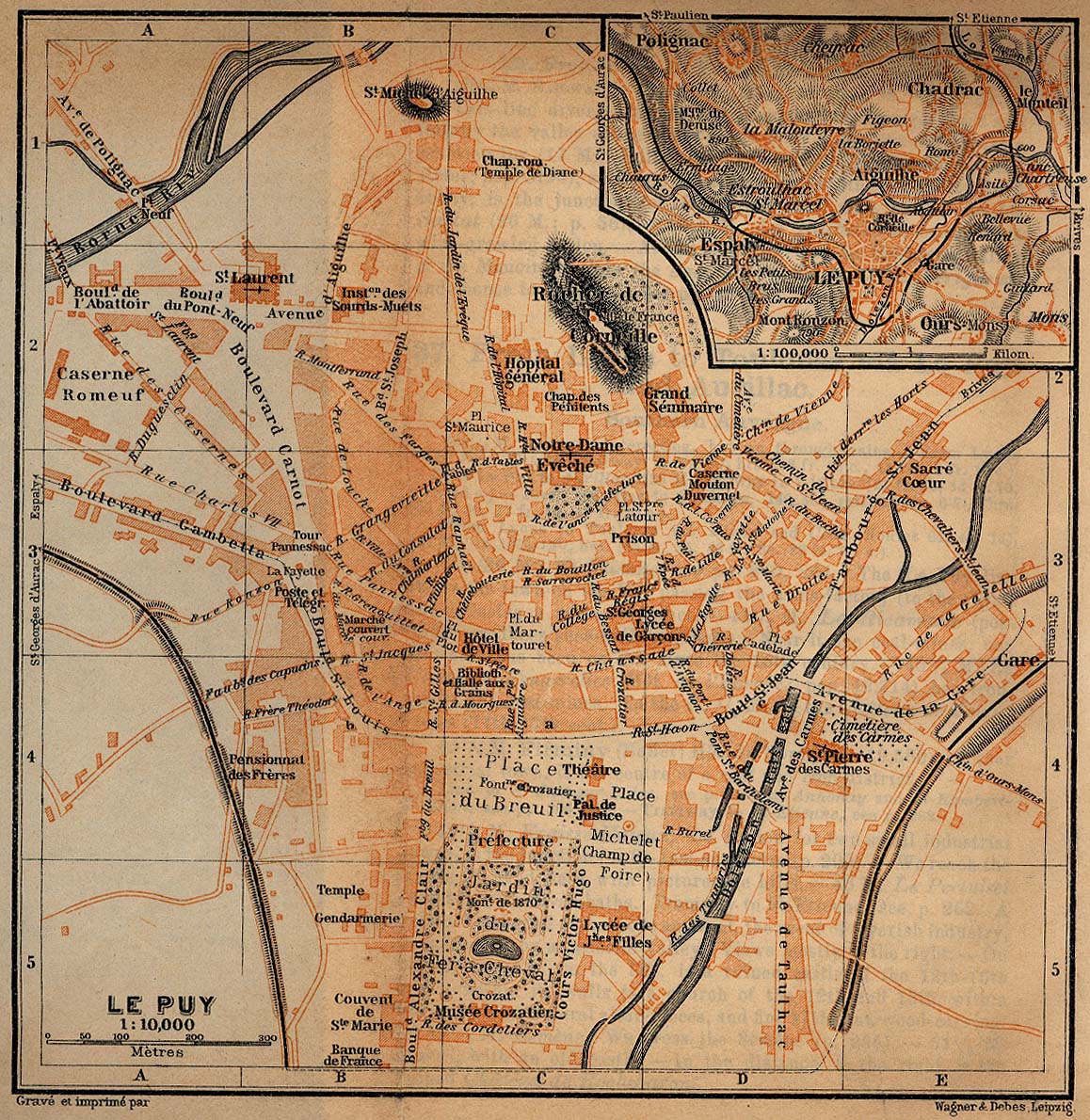I have never been there, but I feel as though I have. I know the street names, the train station, the library, the hospital, and especially the central monument of the city, the cathedral. I’ve imagined walking up the steep incline to the top of the cathedral, exploring Saint-Michel d’Aiguihe, the small church perched on a hill next to the city, and navigating through the Rue des Farges. I know Le Puy-en-Velay—a small city in the mountains of Central France—in pictures, in video, in maps and in sound. But I have never seen it; and so even though I “know” it, I am aware that I do not. In fact, I only pretend to know the medieval city, the Le Puy circa 1235, and so this is a city that I can never really know completely by sight, even if vestiges of the past remain. While I would like to think of Le Puy as a subject, as an actor with affective qualities upon its populace, Le Puy, for the time being, is an object to me. It is confined within the pages of the brilliantly photographed ILLs that sit on my desk, and accessible through a reality that is pixilated or printed.
It is for this reason that perhaps this is why this city holds a sacral quality to me. It is still distant and mysterious, past and ephemeral. Of course, it is more sacred to be precisely because I have chosen to study the religious processions of the city, and therefore, my association with this city is tainted with the a strong sense of the sacred that is perhaps more imposed than actual. Even my ritual experience with this city is influenced by the fact that I am actually trying to discover how religious rituals worked here – and somehow that makes me feel as though my own ritual experiences are somehow contrived.
Moreover, now that I have tickets to finally see the site I will write my dissertation on, I worry that the space will somehow loose its sanctity. Earlier in the semester, we had a brief discussion about such fears—when a mental image of a place is abruptly alerted when confronted with its reality—and have since wondered if sacred spaces (especially ancient historical sites) are sacred because they are distant, exotic and somehow unreal. Is the city sacred for its inhabitants or its visitors? Or are there some cities (Jerusalem?) that might be considered inherently sacred? Le Puy itself was said to have been founded on the site of a Druid altar, thus the sanctity of the site was already confirmed when it the cathedral was legendarily constructed by angels at the newly Christian Le Puy in the early Middle Ages. The city was clearly considered sacred in the medieval period, not only for these legends, but also as a site of pilgrimage; however, such associations are not as widely recognized today.
Again, this brings us to the larger question of whether sacred space is made or manifest. That is to say, does the city become sacred through ritual action and foundation or are such rituals performed because of the inherent nature of the site of the city? Either way, rituals and cities are both constructed by human hands, and thus mankind is given agency in the establishment—and the destruction—of sacred space.



Posted at Apr 14/2008 08:29PM:
Elisa: I added these images as examples of how I experience this city -- the photograph was not taken by me so I literally experience the city through someone else's lens. I also know the city through old maps -- I find it quite interesting to examine the ways in which we use maps as markers and how they visualize the space of an urban environment
Posted at Apr 15/2008 11:12AM:
claudia: I'm so glad you chose to write on a city you've never visited! It's really interesting to see how maps, photographs and the depictions of the city by other authors have created your own personal vision of the space. Are we influenced by another's designation of a space as sacred? Or is it a personal attribution?
Posted at Apr 15/2008 12:31PM:
Heidi: This assignment is very thought provoking and in some ways the questions you have raised are similar to Keffie's -- does the sacred character of a place depend upon some sort of objective engagement that diminishes with increasing familiarity? I also thought it was interesting that your impression of the city as a sacred space stems from focusing on one aspect of its history, architecture, rhythms, etc. -- namely its religious culture. Should we think of "sacred space" as a deliberate manifestation of the observer's disposition?
Posted at Apr 15/2008 12:52PM:
keffie: Your piece is in direct contradiction to what Pahl talks about in terms of having a sensory and kinesthetic experience of a place. Without ever experiencing it in person and through two-dimensional media you are able to relate to this place as sacred. How do we reconcile these two perspectives?
Posted at Apr 21/2008 10:46PM:
Carissa: Elisa, sorry for the late comment. I found your assessment to be extremely similar to mine, especially since I chose to write about a city that I had never visited. One question that I had addressed in my exercise is do you need to have some type of engagement with a city in order for it to be sacred? In this particular case, I feel that you do not.
